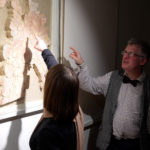Fresco Painting
24 Apr 2025

 Roman fresco paintings were made using the Fresco technique which is a painting technique involving the application of pigment to wet plaster and the subsequent drying of the image.
Roman fresco paintings were made using the Fresco technique which is a painting technique involving the application of pigment to wet plaster and the subsequent drying of the image.
But beyond the very high level of ability shown in Roman paintings – what makes them so special and important for us in our modern era?
Roman artists used single point perspective to great effect. They would often use the method to transform the windowless walls of Roman houses into “picture windows” that would help to visually expand the space of rooms. They would help to make windowless rooms look larger.
On the topic of perspective alone, Roman painting was incredibly influential on the development of art. Not only did they use it to add another element of realism and beauty – but they also used it to create the illusion of a third dimension. The ancients were in many ways centuries ahead of their time in terms of art and innovation.
The use of light and shadow was first introduced in the ancient fresco paintings of the Romans (as well as the Greeks). Understanding the way that light behaves in a particular environment allows for a painter to create rich, realistic imagery which is closest to our own human interpretation of what we see around us every day.
The ancients began to study the science of optics – and this evolved into a way for artists to mimic the world around them in a more realistic fashion using light and shadow.
Many of the wall paintings or frescos adorned walls not just inside rich villas, but also inside private houses and public buildings. Depending on the function of the room, walls might be painted with imaginary architecture, still life, mythological scenes, or purely decorative motifs. Many of these motifs were derived from pattern books carried by the artists. So despite the lack of physical evidence of other forms, it is reasonable to assume that many other art objects would have shown subjects similar to those found on the painted walls.
